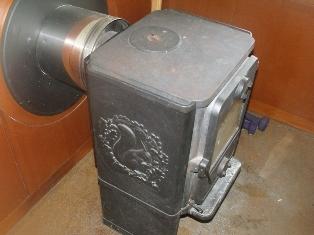Quite often, when calculating the heating of a residential building, the question arises of what is a heating elevator. In simple terms, the elevator heating unit is a water-jet pump, which increases the pumping of water in the internal heating system of apartments due to pressure drops at the entrance to the heat point. Simply put, 5 cubic meters of water were taken from the heating network , and more than 12 cubic meters were supplied to the heating system of the apartments. In this case, the question arises of how such an increase was obtained.
If an elevator unit is present at the
heating station that provides heat to your home, this means that very hot water is supplied to your heating system. Its temperature can be up to 150 degrees Celsius, while on the street the temperature can be equal to 30 degrees below zero. In pipes, superheated water is under high pressure, so it does not boil there and does not evaporate. However, water with such a temperature cannot be supplied to heating radiators, since they can cause burns if they are touched or if they rupture, as some batteries, such as cast-iron, do not tolerate large temperature changes. And nowadays, polypropylene pipes are used more often for heating, the water temperature in which should not exceed 95 degrees Celsius, in addition, in this case, their life will not exceed one year.

The elevator unit of the heating system using the elevator is very hot water, which is supplied from the boiler room, cools to normal temperature and feeds into the heating system of the housing. How does this cooling happen? The elevator assembly mixes the
hot water that is supplied from the pipeline and the cooled that flows from the building from the return pipeline.
Thus, a good saving is obtained. If the elevator unit is used in the heating system, it takes a small amount of hot water that flows through the pipeline from the boiler room, mixing it with the cooled one flowing from the return pipe, and supplying it to residential apartments for the second time. Of course, with such heating, some temperature is lost, but the elevator causes the water to flow much faster through the heating system of the residential building, resulting in a completely insignificant temperature difference between the risers between the apartments in which the hot water gets first and the apartments that receive heat last.
And if there was no elevator unit or if its nozzle were thrown out, then the residents of the first apartments would have very hot
radiators , as a result of which they would have to open all windows and doors even in winter with severe frost. And the residents of the latter, and especially the corner apartments, would freeze even with the most insignificant
decrease in air temperature. Quite often, this actually happens.
Thus, the main purpose of the elevator in the heating system is to simultaneously lower the temperature of hot water by mixing it with cold, and a significant increase in the amount of water that is supplied from the boiler house to residential apartments.